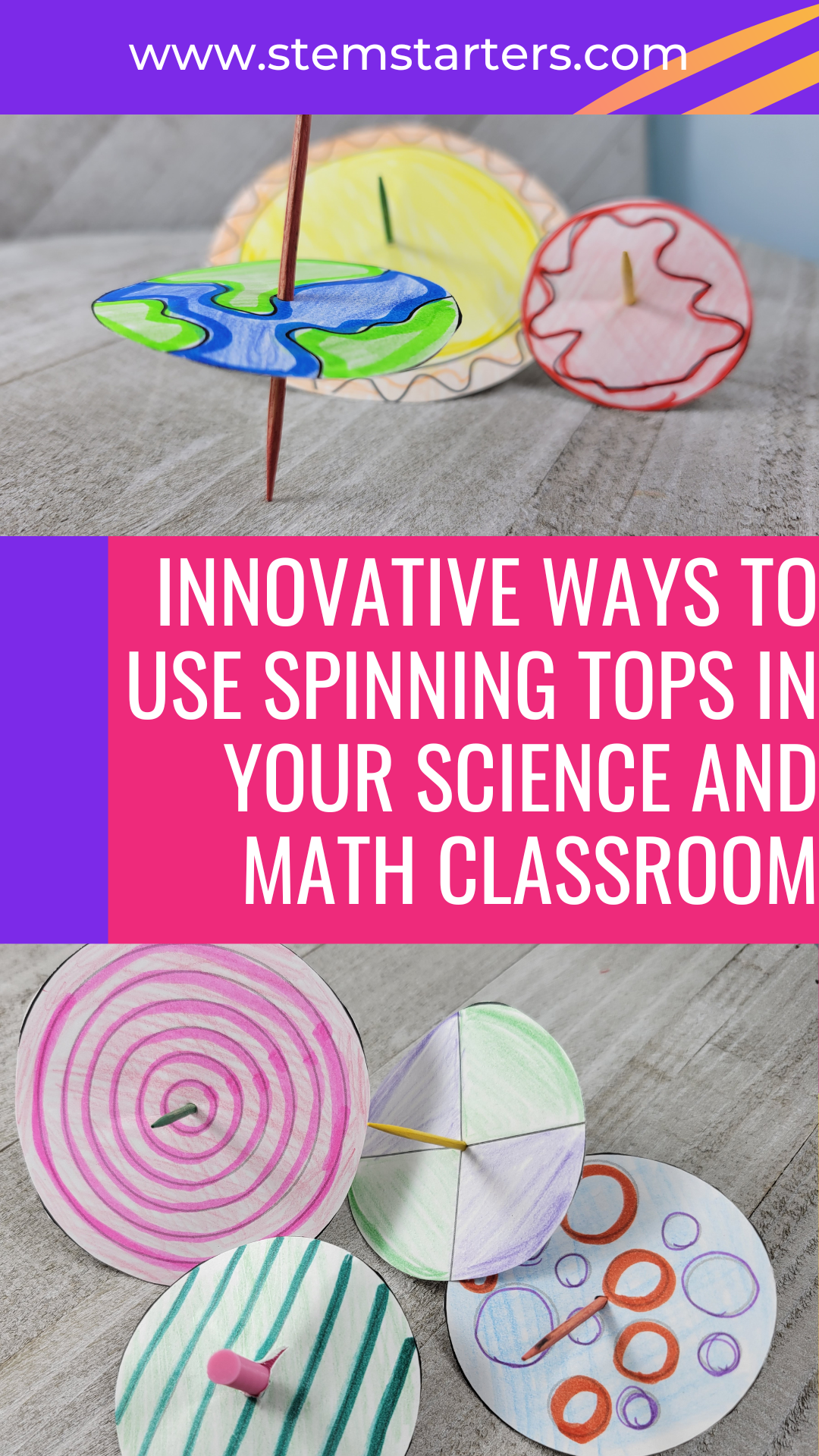
Spinning tops (or spinners) are an amazing tool for your science and math classroom! This is a great learning activity that is also a fun and creative process for students. It is a wonderful way to bring force and motion concepts to life in your classroom.
How to make a spinner
There are several different ways to make the center of the spinner, or the axis! You can use:
- Toothpicks
- Pencils
- Legos
- 3D Printer (free file included in my TPT Spinner Collection)
- Recyclable objects
- Laser Cutter
- Store bought spinners for the base – such as these awesome flat topped ones from Amazon https://amzn.to/3CQPchk
You will only need a few materials for your spinning top that you likely already have around your home or classroom.
- Tape
- Crayons/markers/colored pencils
- Heavy paper or cardboard
- Something to act as the axis for your spinner (toothpicks are an easy option!)
Step 1: Create and decorate a disk from thick paper or cardboard.
Step 2: Place your spinner through the center of the disk.
Step 3: Spin your top as fast as you can!
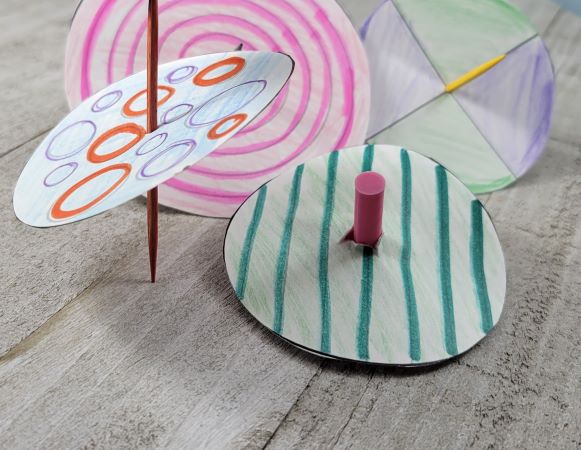
Why does a spinner spin?
Whenever you use your hand to spin your spinner, you are applying a force called torque that enables the spinner to take its potential energy and transfer it into kinetic energy. If there were no outside forces acting on the spinner, it would continue forever (Newton’s First Law of Motion). However, there ARE outside forces that will eventually stop the top and make it fall over – friction, gravity, and balance.
The axis is what the top spins around and the piece that touches the table or other surface that you are using. The axis spinning on the surface is causing friction. The smaller the point touching the surface, the lesser the friction. This friction will eventually cause a slow down in your spinner. Once the spinner slows down, it becomes unbalanced, giving gravity a chance to act on the spinner and cause it to spin around a different axis point. This is known as gravitational torque.
How I used spinners with my students
Students received a math spinner page and a challenge page. With a Google Slides presentation, I was able to introduce force and motion and why we were making our spinners. Students worked independently coloring and creating their spinners, but they could also work in partners or groups to add to the excitement. Once students were done with their challenge page, we gathered for a class discussion of the challenges provided in the Slides.
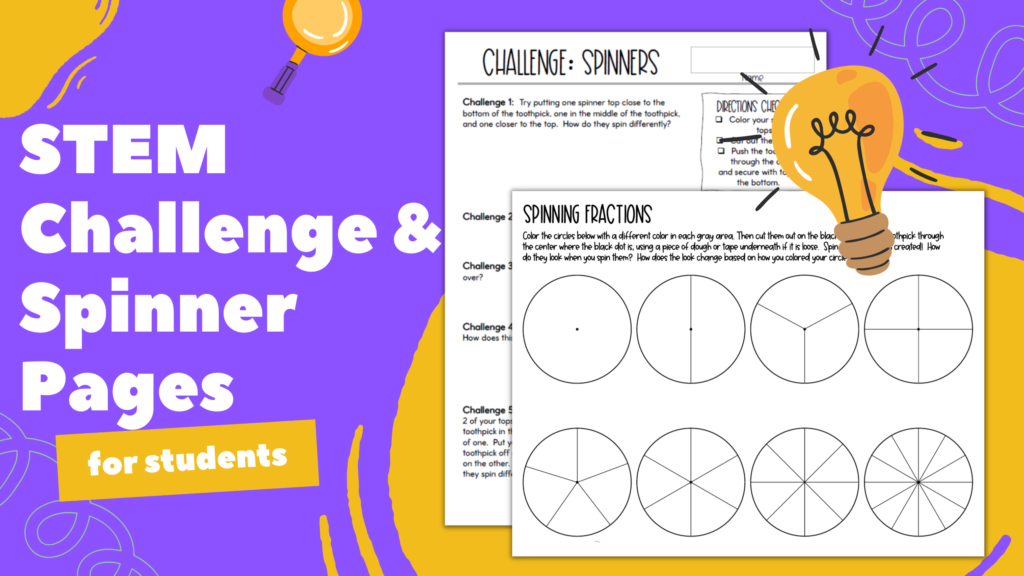
What to do with a spinner
Spinners are an easy, FUN way to bring science and math to life in your classroom. You can teach force and motion and engineering concepts easily with a plain spinner. I also have created fun ways to teach other concepts through my spinner collection.
Fraction Spinners help students to understand more about fractions, especially large versus small fractions, as well as probability.
Planet Spinners help students to learn more about the planets in their solar system and their order from the sun.
Spinning Tops give students the opportunity to show their creative side and bring STEAM concepts to life.
Shape Spinners gives more information on shapes and how that affects the spinning of the top.
Extension questions with a spinner
- Ask students to take one of their spinners that they created and make changes that would make it spin longer.
- After students have completed the challenges with their spinners, you can extend this activity. Using the knowledge that they have gained about spinners, torque, force, and gravity, have students create their own spinner from your STEM materials (or “trash stash” as I lovingly call mine). They can also bring in their own materials from home. They should think about how they could build something that would balance, cause minimal friction, and has an axis to spin around.
- Use different items to test out different tops with different materials, different axis materials, sizes, shapes, and weights. Which ones work best? Why do you think that is?
- Have students design and develop their own 3D spinning top using Tinkercad.com.
Want to create spinners with your students in your own classroom?
You can make this a quick, print and go activity with your students. Check out my products on my TPT Store – STEMStarters.
Or check out the bundle and save!

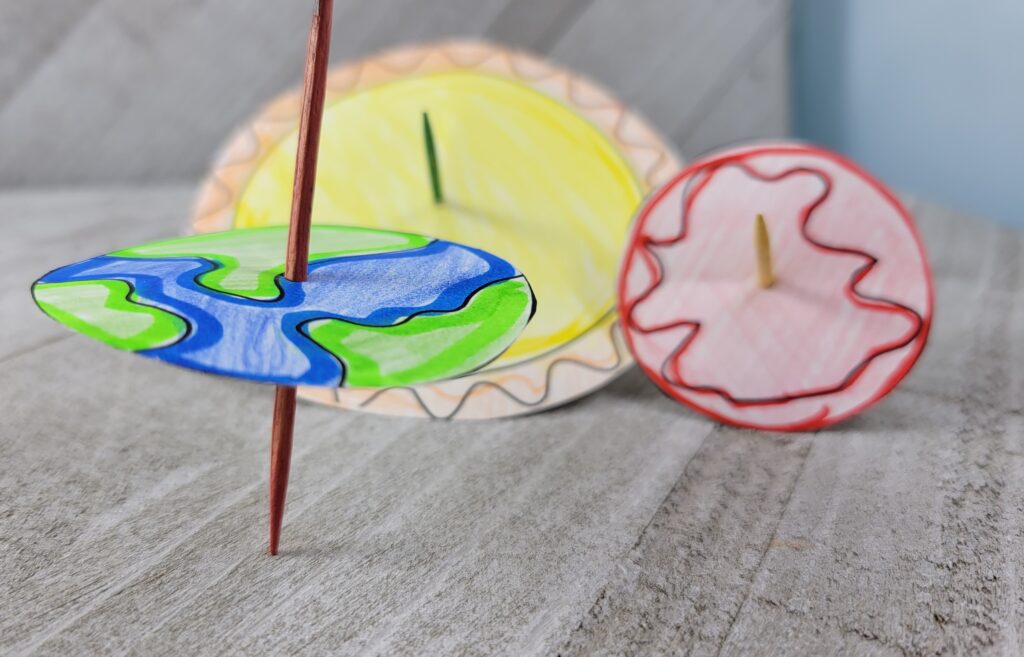
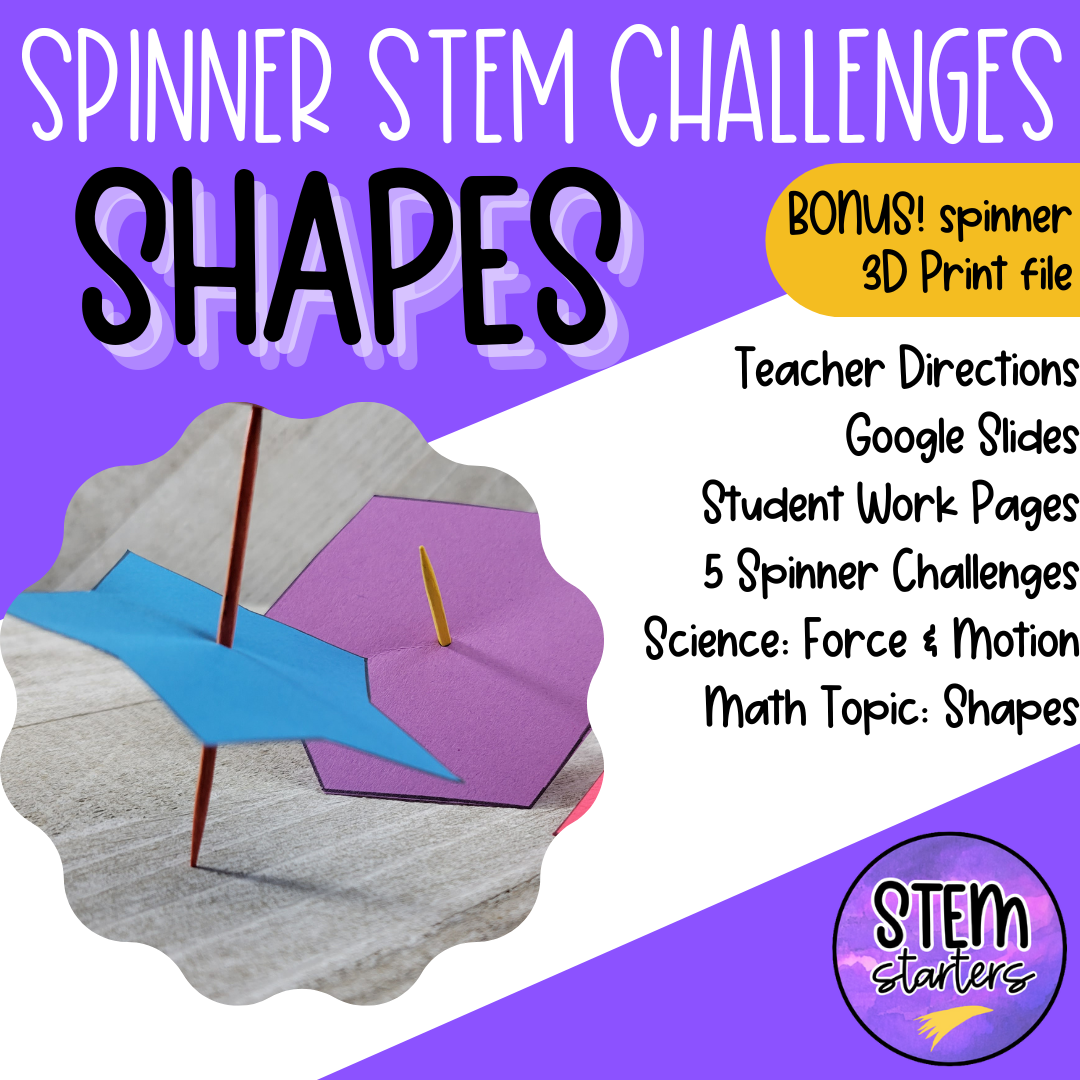
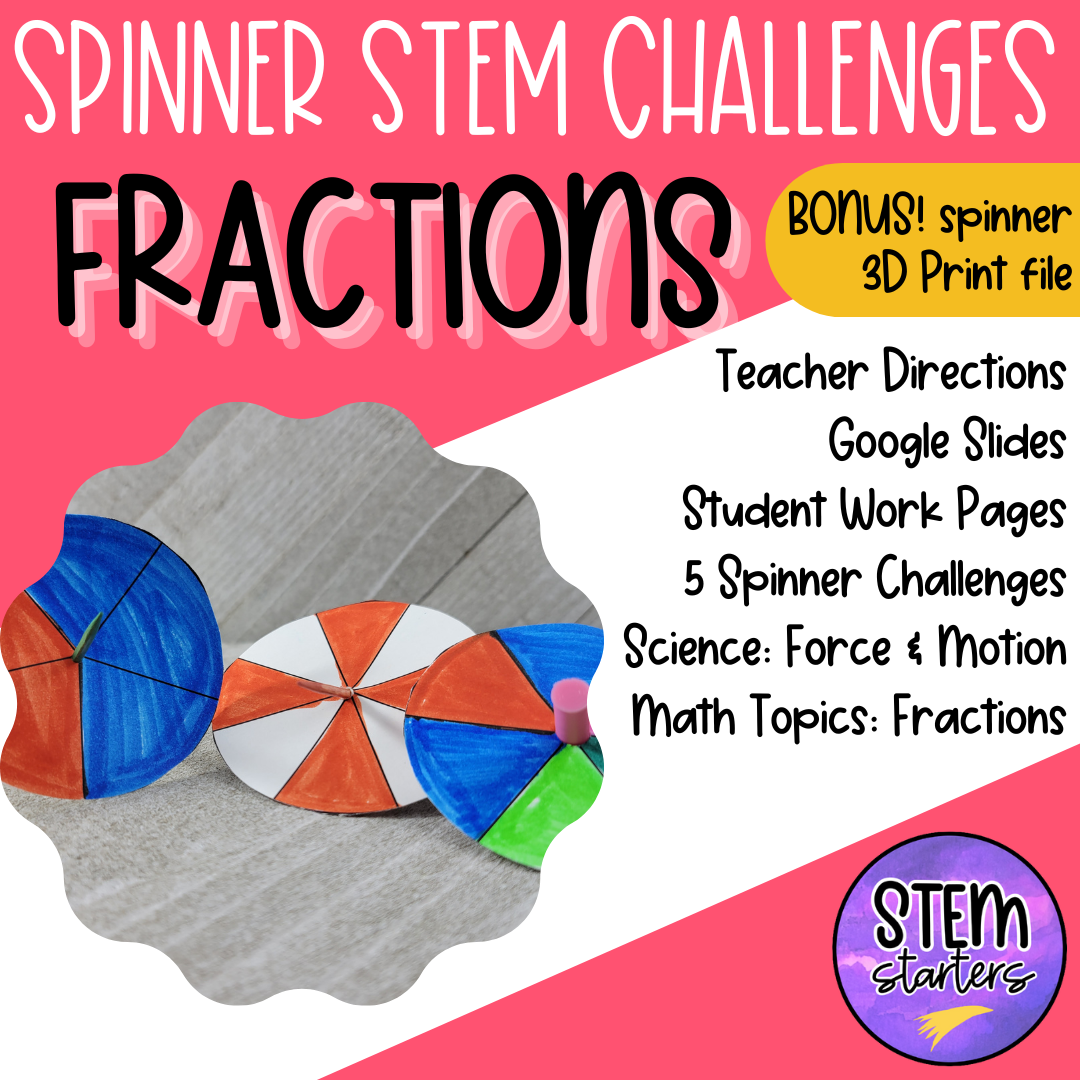
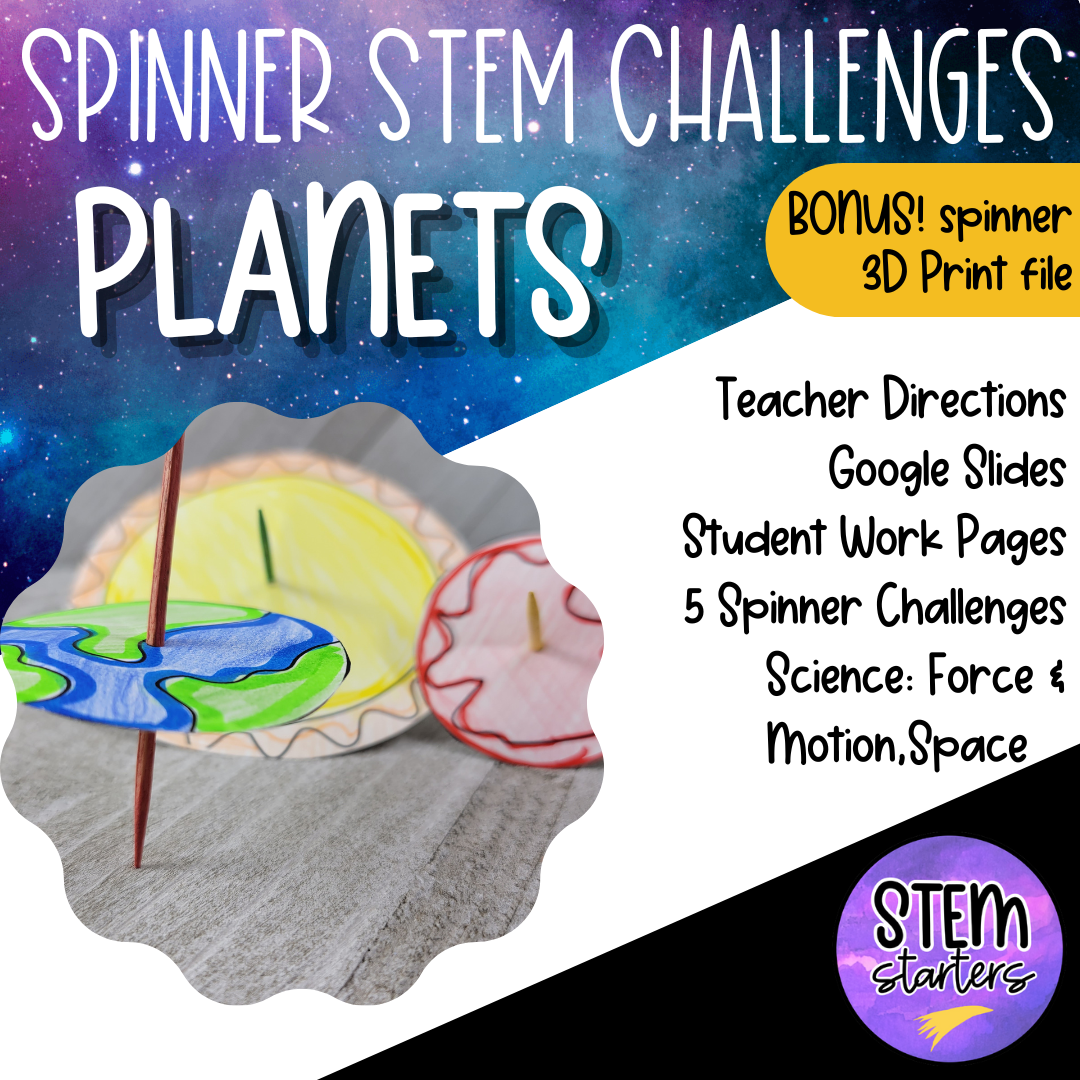
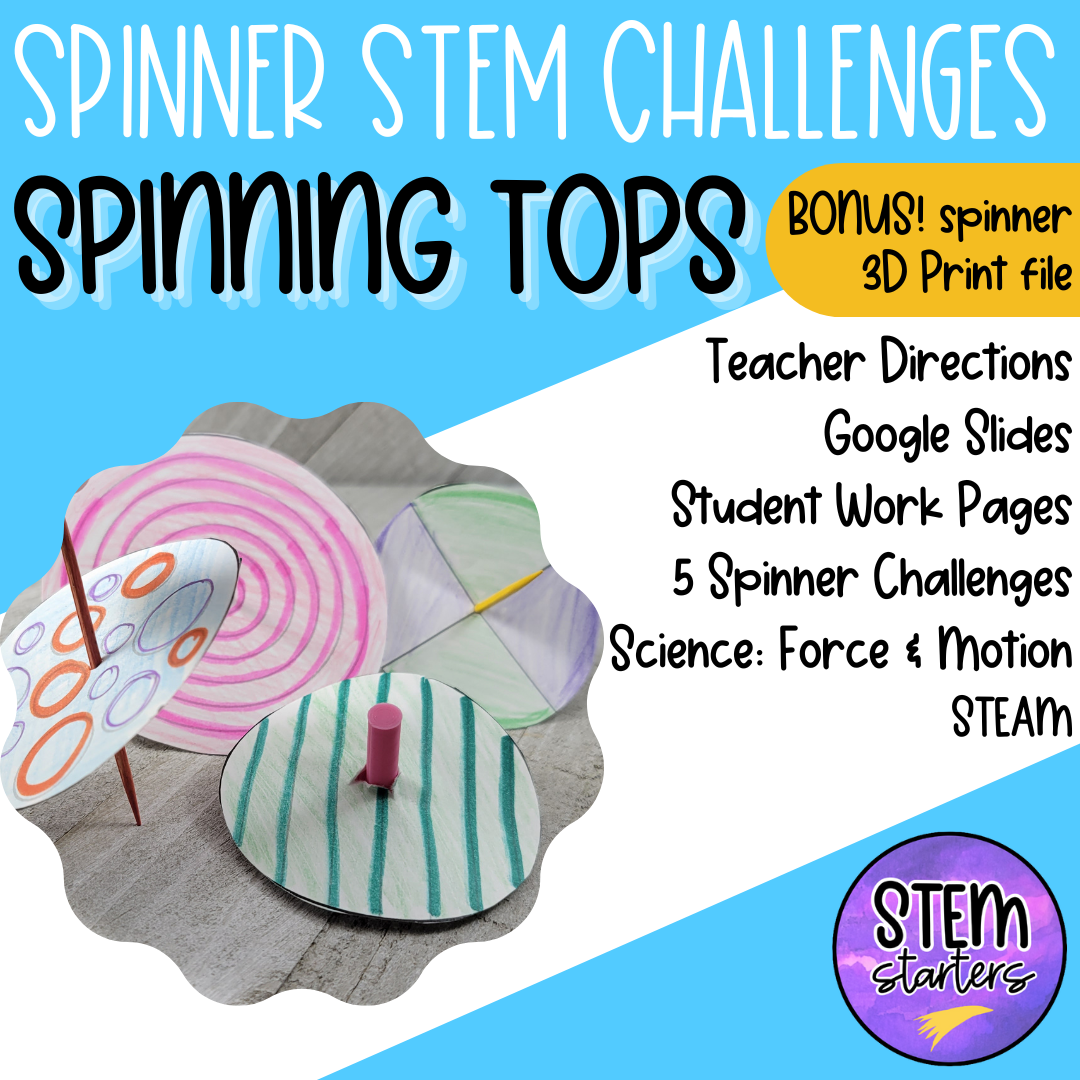
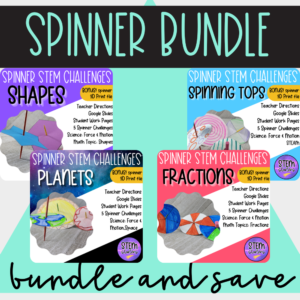

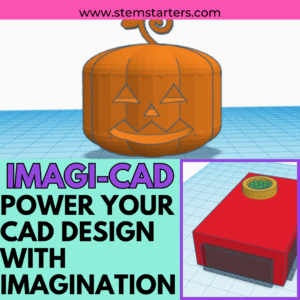
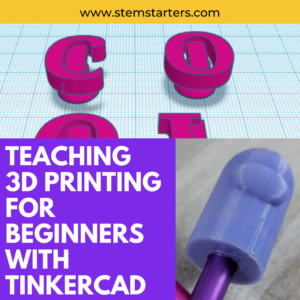
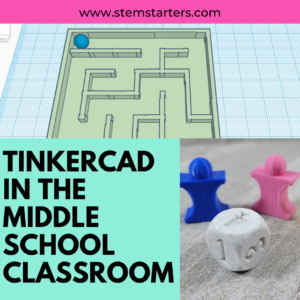



One Response